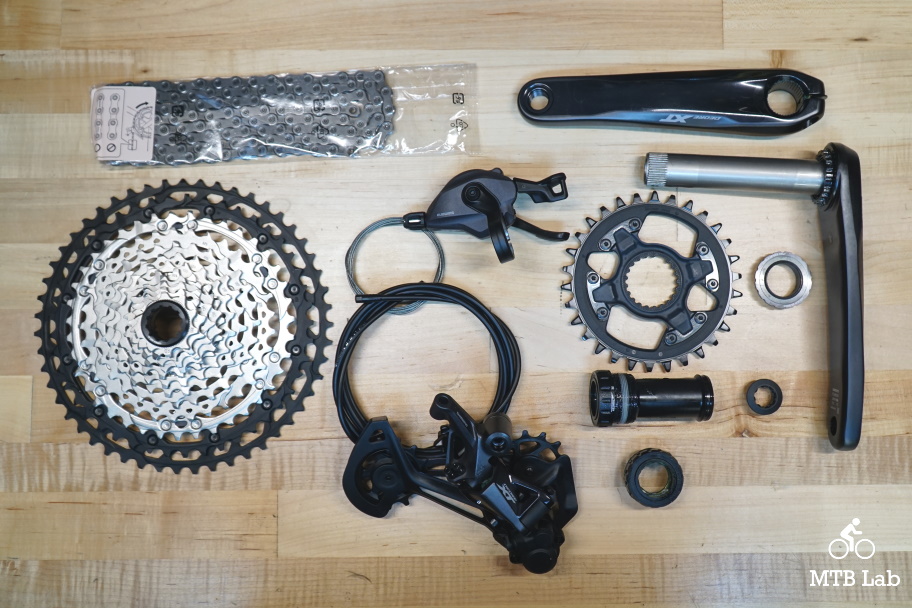
The Shimano XT 12-speed M8100 group comes in 1×12, and 2×12 flavors and gets the trickled down XTR technology along with an affordable price point. It features cassettes with a wide range 10-51T or a smoother shifting 10-45T, direct-mount 1x or 2x alloy cranks, profiled steel chainrings, sculpted chain, 13-tooth pulley derailleurs, and fast multi-shift and two-way release shifters. The entire groupset (minus a BB) weighs 1840g and retails for $597.
For further information, refer to bike.shimano.com.
Jump to “Impressions” – skipping component details
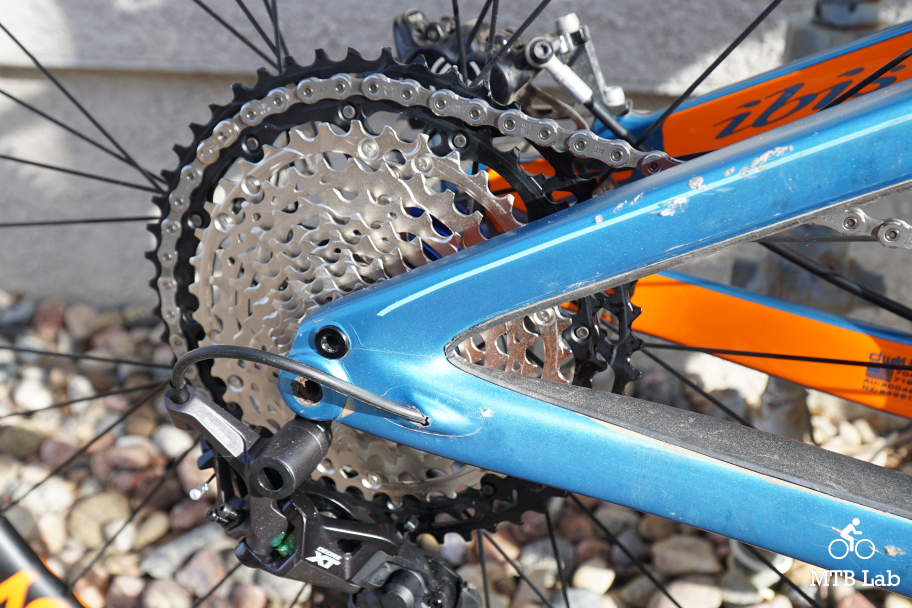
Components
Cassette
There are two XT Hyperglide+ 12-speed cassettes ($159.99) that work on the new Micro Spline freehub body: the 10-51T Wide Range provides a whopping 510% gear range while the 10-45T Rhythm Step has a 450% range for milder and more ideal steps between gears. The cassettes feature new shift ramp designs that provide faster and smoother shifting via the Hyperglide+ tooth profiles. The new cassettes also employ a new alloy Beam Spider construction for improved power transfer. They’re built with a strategic application of aluminum and steel materials for an optimal blend of weight savings, rigidity, and durability. The two largest cogs are aluminum, and the rest are all steel. I tested the monster CS-M8100-12 10-51T version, which weighed in at 469 grams.
- 10-51T 12-speed : 10, 12, 14, 16, 18, 21, 24, 28, 33, 39, 45, 51
- 10-45T 12-speed : 10, 12, 14, 16, 18, 21, 24, 28, 32, 36, 40, 45
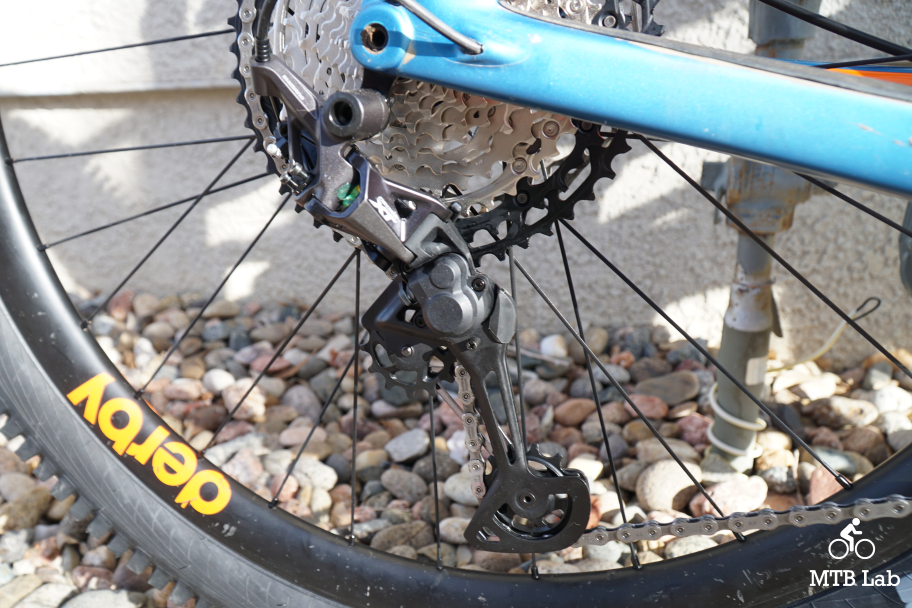
Derailleurs
They have two XT 12-speed derailleurs ($114.99) that feature bigger 13-tooth pulleys and their Shadow RD+ technology: the SGS long cage works with both 10-51 and 10-45 cassettes, and a 2x specific one that works on 10-45 cassettes. The derailleurs bring a new level of drivetrain silence thanks to decreased tension in the low gear position and an added bumper on the pulley cage. The larger 13T pulleys increase efficiency and chain management. I tested the RD-M8100-SGS SGS Long version, which weighed in at 281 grams.
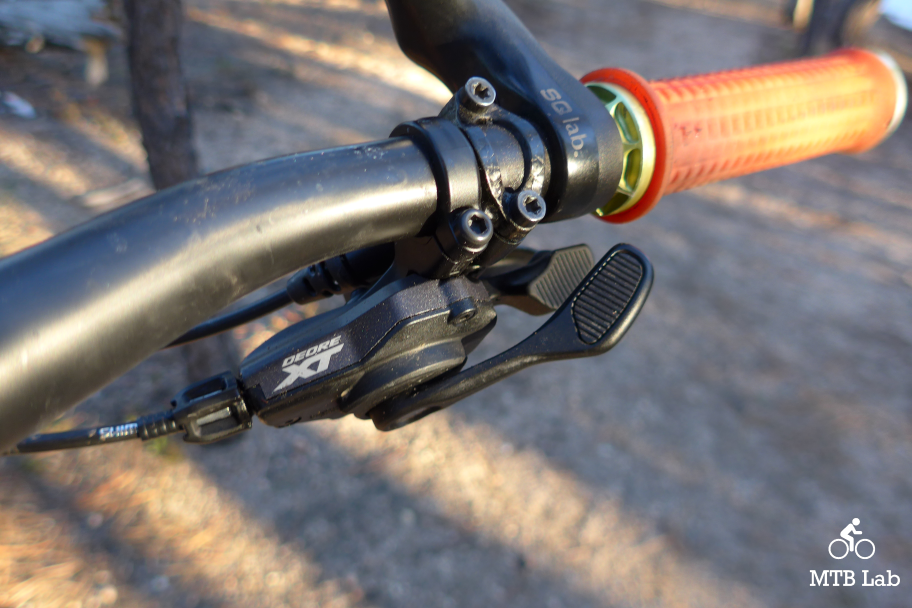
Shifters
The XT RapidFire Plus trigger shifters ($59.99-$60.99) offer 20% quicker lever access time and 35% less shifting operation force compared to their predecessor. For the 2x drivetrain, they have a new Rapidfire Mono for the front shifter. The shifters feature their Rapidfire Plus technology and Multi Release so that the downshift lever can be operated by your thumb or forefinger. I tested the SL-M8100-R band clamp version, and the shifter/cable/housing weighed in at 192 grams.
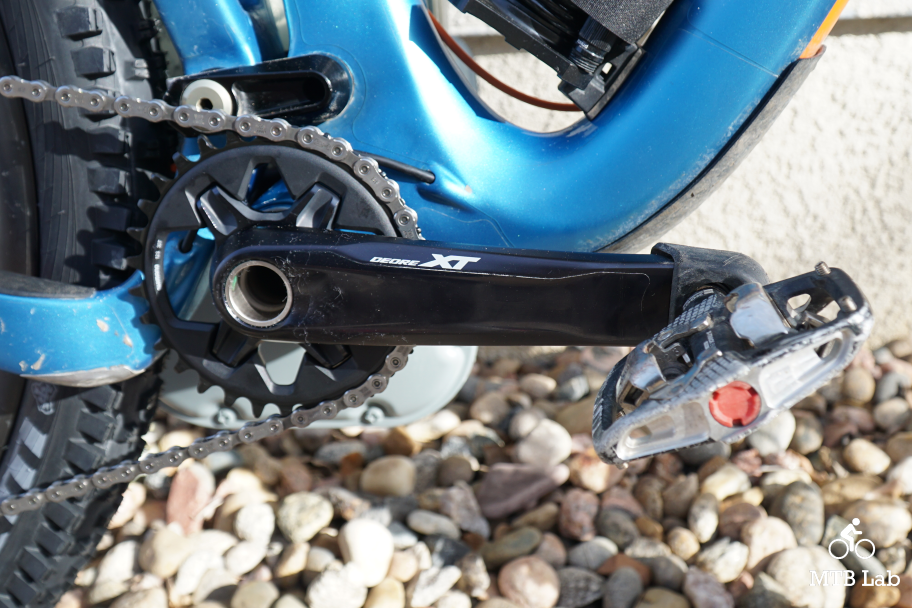
Cranks
The XT 12-speed HollowTech II cranksets, utilize a direct-mount chainring system and come in 1x and 2x options (1x $154.99 w/o chainrings and 2x $219.99): the 1x comes in a narrow-wide tooth profile in 28t-36t options and three Q-factors/chainlines (172mm/52mm, 178mm/55mm, 181mm/56.5mm). At the same time, the 2x is a 36-26T gear combination and come in 172mm and 178mm Q-factors versions. All of the versions come in 165mm, 170mm, 175mm, or 180mm arm lengths. I tested the 1x FC-M8100-1 version, which has a 172mm Q-factor, 52mm chainline, 170mm arms, that weighed in at 525 grams w/o chainring (Nondrive 227g and Drive 298g).
Chainrings
The XT 12-speed chainrings ($61.99) feature their Dynamic Chain Engagement+ technology, which features unique gear teeth profiles that deliver exceptional chain engagement and chain retention. The Direct Mount chainrings attach to their HollowTech II cranksets and come in 28T, 30T, 32T, 34T, and 36T sizes. I tested the 30T version that weighed 116 grams.
Chain
The Hyperglide+ chain ($43.99) provides enhanced chain retention thanks to an extended portion of the inner plate. The chain features Quick-Link assembly and Sil-Tec treatment for extended offroad durability. The new design ensures smooth shifts and strength and utilizes Dynamic Chain Engagement+ for interfacing with their chainrings.
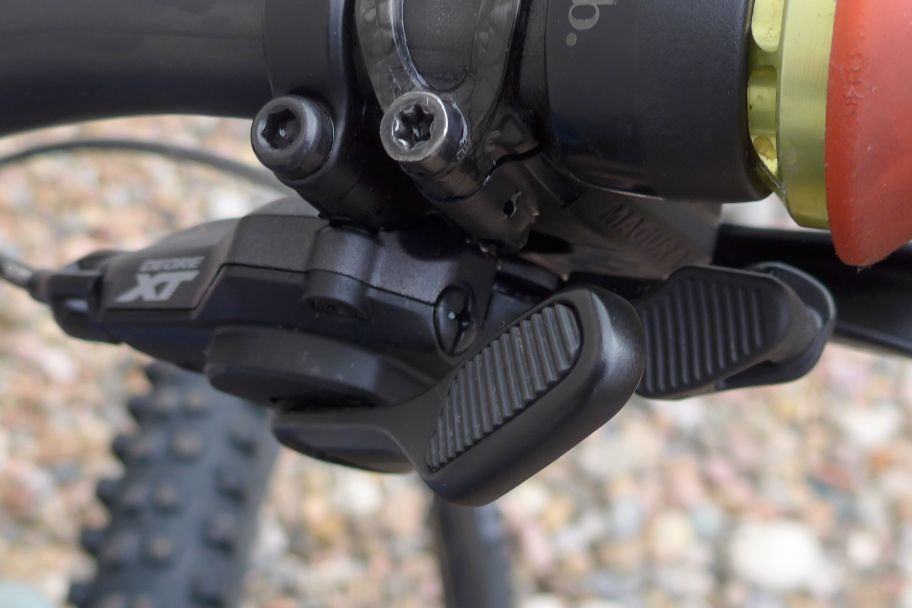
Impressions
Shifting
Upshifting is light and smooth, and the frontmost shifter lever allows up to four cog changes at one time, though I only tended to do one to two gears. One of the most amazing things is the upshifting under heavy loads, especially onto the larger cogs. There isn’t any grinding, creaking, delays, or shifting issues, and the chain just ramps up onto the cogs smoothly and pleasingly, without any hesitation, making for more confidant pedaling on any terrain.
The rearmost downshifting lever works in both directions, so you can push with your thumb, or pull with your forefinger. The pushing mode allows 1-2 gear drops at once, while the pull is only one gear at a time. In comparison, the downshifting feels a bit clunkier in the cog drops, but it functions just fine and can be done while hammering on the pedals. It’s pretty nifty to push that back lever hard and quickly drop down two gears while sprinting, greatly helping to keep optimal cadence while hammering.
Overall, the shifting feels light, fast, crispy, and precise, though the upshifting has a slightly long throw. The rubberized thumb pads have a nice tactile feel and work well, offering a grippy slip-free surface.
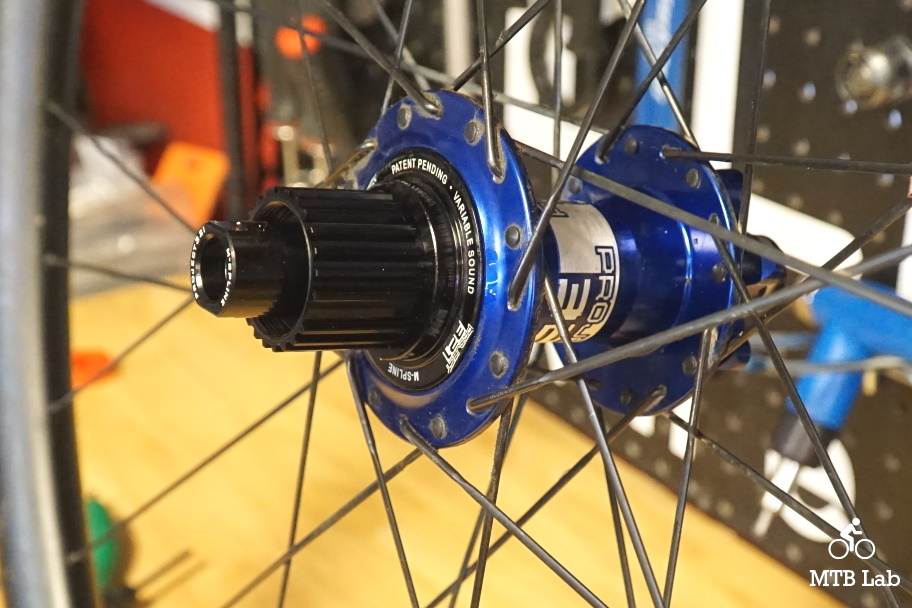
Micro Spline Freehub Body
The new Micro Spline freehub body system has 23 deep, smaller rectangular splines. This design allowed them to squeeze in a 12-speed cassette with a 10-tooth outer cog. Also, spreading the load out means the system can tolerate massive amounts of torque without galling the soft aluminum freehub splines. It isn’t compatible with standard hubs, but retrofittable freehub bodies and hubs are available from most companies, along with Shimano’s excellent lineup of Micro Spline rear hubs. Sliding the cassette onto the driver took a few twists and turns to mesh and align the 23-splines of Micro Spline system due to tighter tolerances.
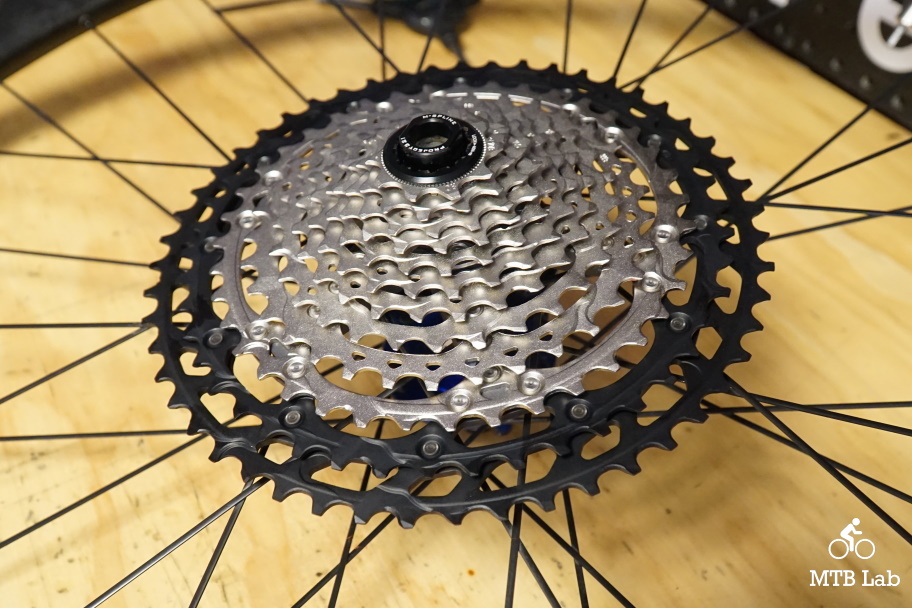
Cassette
The ramps are the typical Shimano highly engineered pieces of machining and are just plain works of art. No other manufacturer seems to be able to touch them on their ramping expertise, and their latest ramping design and Hyperglide+ tooth profile iteration are thoroughly impressive. The interaction between the chain, cassette, chainring, and derailleur offers a very quiet drivetrain system, and the chain glides from one cog to the next, offering a silky smooth yet well-defined gear changes. The chain’s inner plate profile and the revised cassette ramps offered noticeably smoother and improved shifting under power.
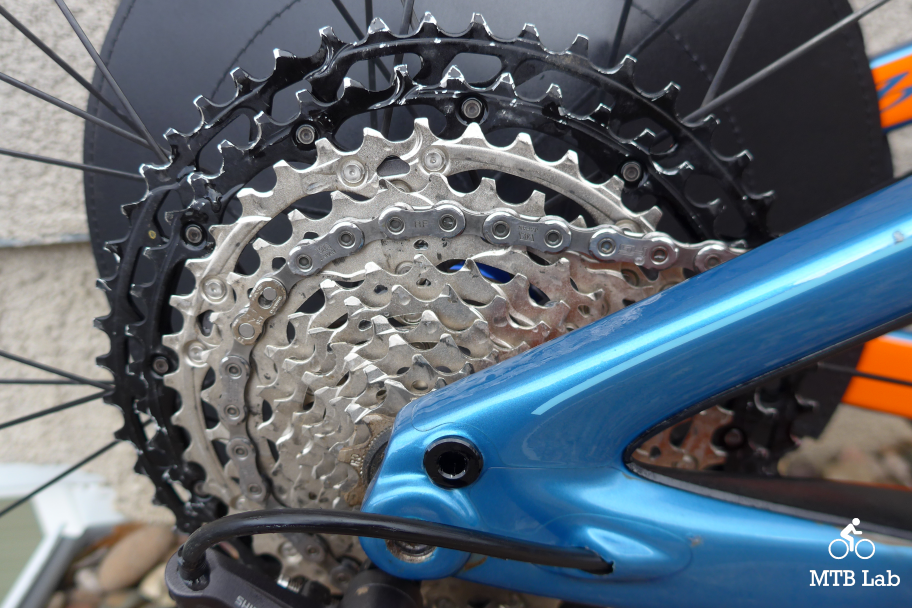
The Shimano 10-51T cassette ratio is 10-12-14-16-18-21-24-28-33-39-45-51, while SRAM Eagle 10-50T is 10-12-14-16-18-21-24-28-32-36-42-50. The first eight gears are the same for each brand, 10-12-14-16-18-21-24-28. The big difference is Shimano’s big cogs 33-39-45-51 ratios compared to SRAM’s 32-36-42-50. The Shimano 33-39 is a big jump, but it keeps the next three ratio set of 39-45-51 close and even, which provides for smooth and optimal climbing capabilities in the largest cogs. At almost 470 grams, it’s a bit clunky and heavy, but it does provide silent running and excellent shifting characteristics, and the 10-51T wide 510% gear range is very advantageous. It was very minute, but I liked the extra tooth on steep and long climbs, and it was most welcome when pushing fat 2.6″ 29er tires (grandpa mode).
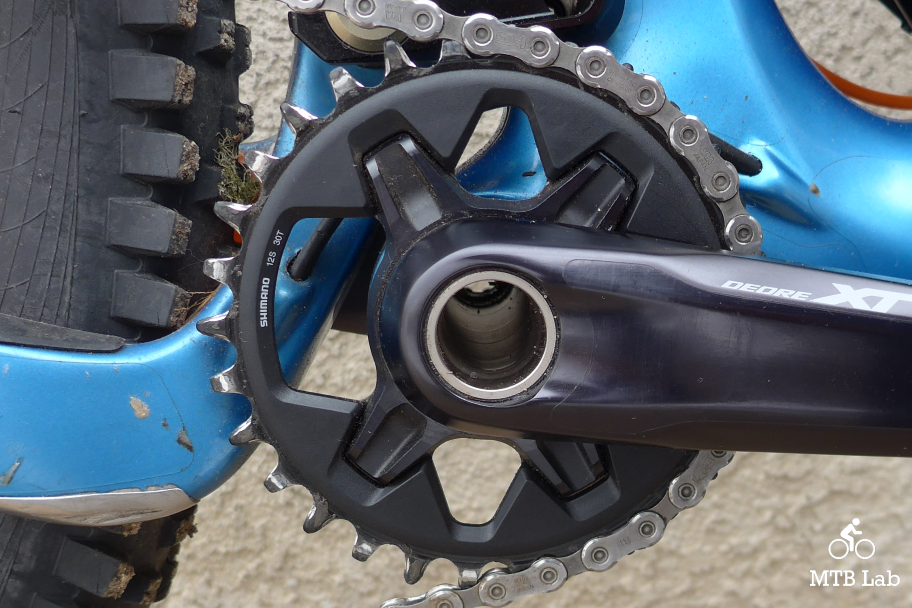
Chain/Chainring
Their tall and pointy tooth profile (Dynamic Chain Engagement +) on the chairing is very secure. After a couple of months of testing in adverse conditions, including riding in heavy snow and crud, I only experienced two chain drops. The direct mount chainring is a hybrid design and utilizes an aluminum spider that is fixed to a plastic-covered steel sprocket. The steel offers improved durability while the aluminum drops a smidgen of weight, though I am not sure why the plastic was used, aesthetics?
The tested 30-tooth chainring worked just fine and was perfect for most of the steep riding I do in Colorado. Interaction with the monster 10-51T cassette was excellent for extended climbing and rolling on most terrain, though I would run out of gears when hammering hard on the flats.
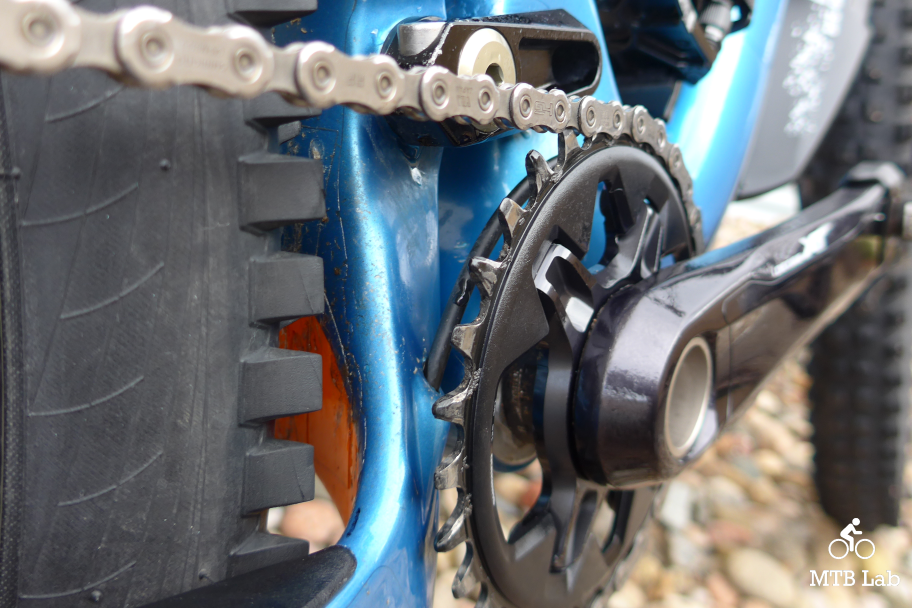
The chain and chainring work in synergy to keep the chain engaged on the teeth of the sprocket. The chain with its extended inner plate profile, rolls smoothly and quietly, without any jittering or hopping as it snuggly and securely wraps around the chainring. Their quick-link attachment for the chain is much better than their old standard pin replacement method, but it seemed finicky to get snapped into place.
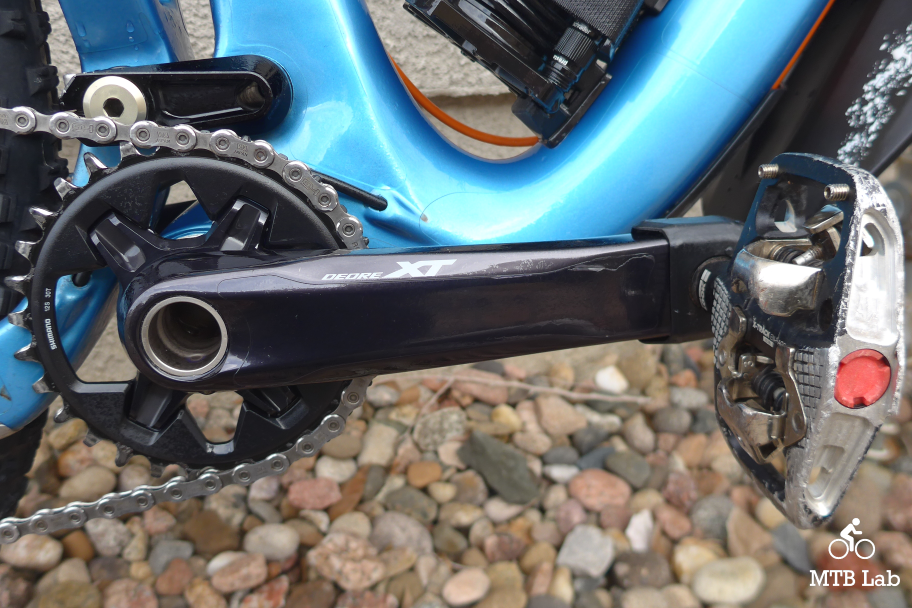
Crankset
The hollow-forged aluminum crankset with its 24mm axle is a bit heavy at 525 grams (w/o chainring), but it’s incredibly durable and puts up with a lot of punishment with nary a scratch. The included protection tape on the outside of the arms alleviated the usual heel scuff marks from occurring. Attaching the direct-mount chainring to the cranks was a breeze, and it has stayed secure and tight. If you haven’t ever installed a HollowTech crank, their connection system might seem a bit odd, but I found the splined axle with the pinch bolt attachment system simple to use. Once the crankset was installed, it’s been secure, creak free, and strong. I went with a slightly shorter 170mm arm length this time and found that they accelerated a tad faster, with no apparent power loss.

Derailleur
The extended cage model worked perfectly with the wide-range 10-51T cassette, and the adjustable band type clutch mechanisms and bump stops helped on bumpy terrain and during gear changes throughout the cassette stack range. For durability and protection, the derailleur body is tucked inward to protect the internals, and after some decent rock bashes, it’s done an excellent job of being shielding things.
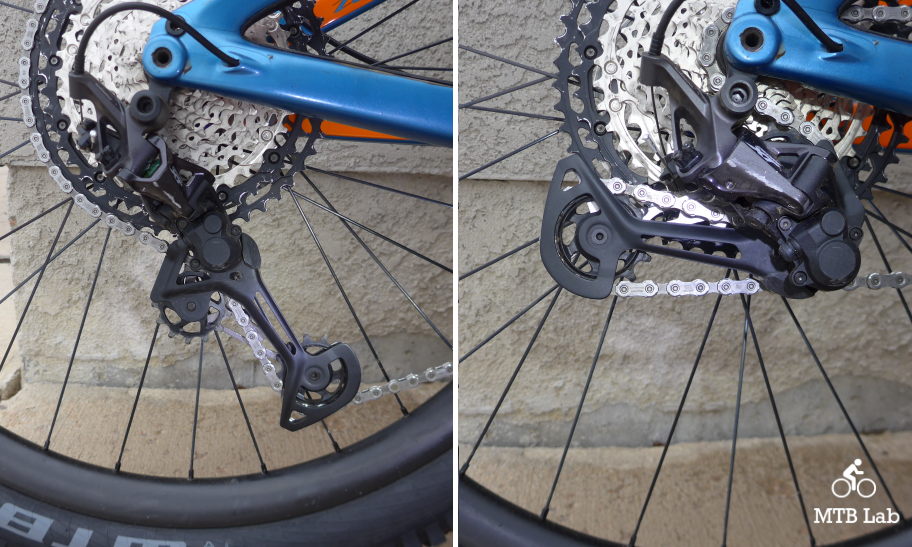
51T vs. 10T derailleur positioning
The reduced cage tension in lower gears kept the drivetrain running smoothly and quietly without any binding, while the large 13-tooth pulleys increased efficiency, kept things quiet, and helped with chain management.
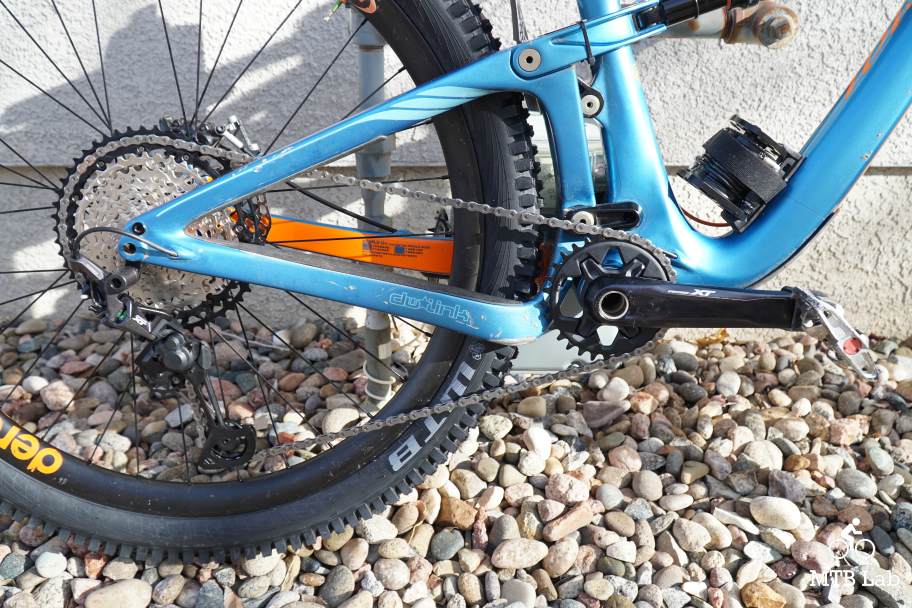
Bottom Line
The Shimano XT 12-speed drivetrain offers lighter lever action, smoother overall shifting, and vastly improved upshifting, especially on the larger cogs under loads. The chainrings pointy tooth profile and the chains directional plates offer secure engagement, smooth-rolling, and silent running. Upshift, downshift, on any terrain, under any load, and it just shifts without any hesitance, quickly, quietly, and effectively from cog to cog.
The wide range 10-51T cassette along with the 30T chainring was a joy to use, and the gear steps, especially on the top three climbing gears, were close and even. The shifters were extremely useful; upshift four gears if desired, downshift one to two with its functional two-way release (thumb or forefinger).
The group offers an excellent affordable price, superb shifting, and performance, though it is a bit on the heavy side.
Although XT is closer to SRAM GX in pricing, its performance is in line with SRAM X01. For comparison, the Shimano XT 12-Speed weighs 1838g and costs $597, while SRAM X01 Eagle is 1575g and $1275. Most of the weight and costs between the two are in the SRAM carbon cranks, and SRAM CNC machined cassette.
| Model | Measured Weight | Price |
| Rear derailleur: RD-M8100-SGS | 281 grams | $114.99 |
| Crankset: FC-M8100-1 | 525 grams | $154.99 |
| Chainring: SM-CRM85 | 116 grams | $61.99 |
| Shifter: SL-M8100-R | 192 grams | $60.99 |
| Cassette: CS-M8100-12 10-51T | 469 grams | $159.99 |
| Chain: CN-M8100 | 255 grams | $43.99 |
| XT M8100 Drivetrain | 1838 grams | $596.94 |





{ 0 comments… add one now }